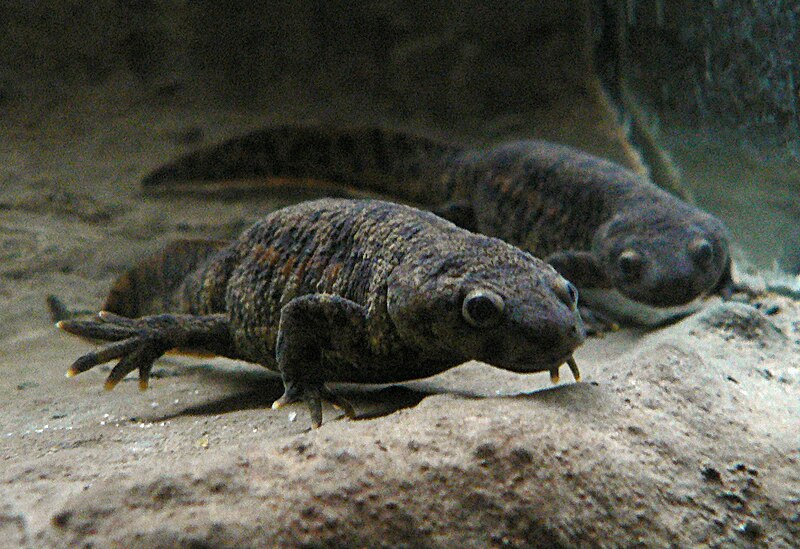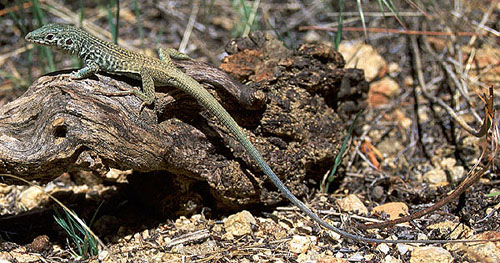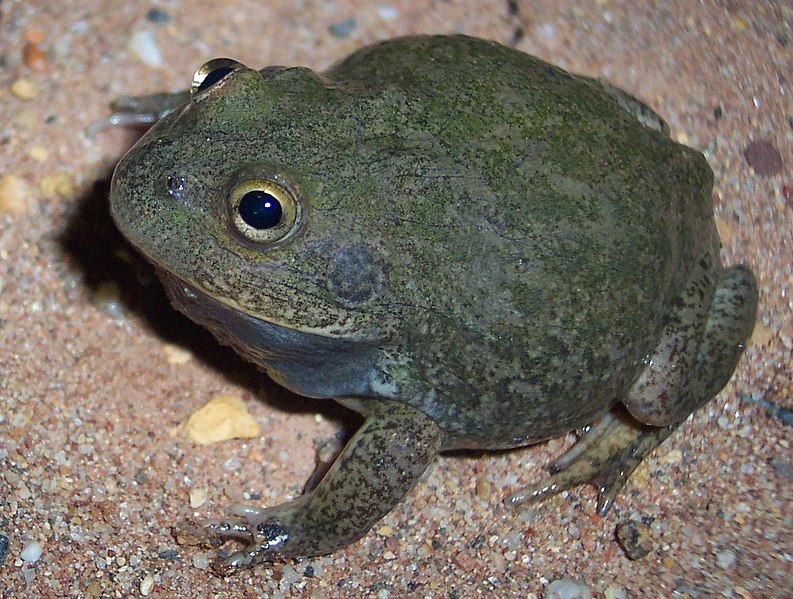Please see Part I of this article for general information on some of earth’s most toxic amphibians (if not creatures in general) and for additional newt-keeping observations.
Tiny Newt vs. Giant Toad
The familiar red-spotted or Eastern newt (Notopthalmus viridescens) is at its most toxic in the immature eft (land) stage, but the aquatic adults are none-the-less well protected.
Decades ago, the mascot of an animal importer for whom I worked was a huge marine toad (Bufo marinus). In those days, animals imported from then French Guyana were particularly massive, and this friendly, 4 pound+ specimen was no exception. Imported animals which did not thrive following their long journey to the USA, ranging from giant Vietnamese centipedes to small rats and finches, all went to filling this amphibian behemoth’s huge appetite.
As a naïve 13 year old animal caretaker, I once tossed a nearly dead, 3-inch- long Eastern newt to the toad. The newt was swallowed immediately and, right before my eyes, the toad flipped over…dead (along with my budding career!). Years later, a co-worker reported a similar incident involving a Western painted turtle (Chrysemys picta bellii).
Interesting Means of Toxin Introduction
 Several salamanders have quite unique ways of distributing their protective secretions – fire salamanders (Salamandra salamandra), for example, can squirt theirs for some distance. Perhaps strangest of all, the Spanish ribbed newt (Pleurodeles waltl) actually drives toxin-tipped ribs through the skin of its back when confronted by a predator!
Several salamanders have quite unique ways of distributing their protective secretions – fire salamanders (Salamandra salamandra), for example, can squirt theirs for some distance. Perhaps strangest of all, the Spanish ribbed newt (Pleurodeles waltl) actually drives toxin-tipped ribs through the skin of its back when confronted by a predator!
Cautions regarding Pet Newts and Salamanders
Highly toxic newts and salamanders, including all mentioned in this article, are widely available in the pet trade. Many make interesting and long-lived pets. However, please treat all newts and salamanders with caution…always wash well after handling them (most need not be handled, and none appreciate it) and, of course, do not trust them around children, mentally challenged persons, or pets.
Further Reading
Please check out my book Newts and Salamanders for more information on the natural history and captive care of red-spotted newt, ribbed newts, fire salamanders and their relatives.
Image referenced from Wikipedia and originally posted by Peter Galaxy.
 That Reptile Blog – Reptile, Amphibian and Exotic Pet Care and Information
That Reptile Blog – Reptile, Amphibian and Exotic Pet Care and Information

 Reptiles hailing from desert and semi-desert habitats are often very sensitive to molds and fungi. Having evolved in unique, relatively pathogen-free environments, their immune systems are usually unable to adapt to attack by microorganisms commonly encountered in captivity.
Reptiles hailing from desert and semi-desert habitats are often very sensitive to molds and fungi. Having evolved in unique, relatively pathogen-free environments, their immune systems are usually unable to adapt to attack by microorganisms commonly encountered in captivity. Many of the substrates traditionally used for such creatures, including most types of sand, harbor molds and fungi when damp. Although not a problem (in limited-contact situations) for all desert animals, some are especially sensitive and quickly succumb to skin and respiratory infections.
Many of the substrates traditionally used for such creatures, including most types of sand, harbor molds and fungi when damp. Although not a problem (in limited-contact situations) for all desert animals, some are especially sensitive and quickly succumb to skin and respiratory infections. A week after her departure, another coworker phoned me at 4 AM, frantically speaking in the rapid fire Spanish typical of her native Venezuela…and which I have great difficulty in grasping at 4 PM, much less 4 AM! Eventually I learned that 3 elderly millipede researchers had passed away recently, and that preliminary evidence indicated that cyanide poisoning, courtesy of the millipedes’ defensive chemicals, was suspected. I was warned against handling the millipedes (which I had been doing for weeks!) or putting them near my face (which I do not do with any creature).
A week after her departure, another coworker phoned me at 4 AM, frantically speaking in the rapid fire Spanish typical of her native Venezuela…and which I have great difficulty in grasping at 4 PM, much less 4 AM! Eventually I learned that 3 elderly millipede researchers had passed away recently, and that preliminary evidence indicated that cyanide poisoning, courtesy of the millipedes’ defensive chemicals, was suspected. I was warned against handling the millipedes (which I had been doing for weeks!) or putting them near my face (which I do not do with any creature). Tarantulas often line terrarium glass with silk, thwarting our efforts to observe them. However, they are less likely to do this if you cover the outside of the glass (that portion that fronts along the burrow) with black paper or cardboard, hinged at the top with tape. If you lift this gently, the spider may remain on view.
Tarantulas often line terrarium glass with silk, thwarting our efforts to observe them. However, they are less likely to do this if you cover the outside of the glass (that portion that fronts along the burrow) with black paper or cardboard, hinged at the top with tape. If you lift this gently, the spider may remain on view. Some years ago I acquired a group of Australian water-holding frogs (Cyclorana platycephala) and found them to be among the amphibian world’s most accomplished burrowers. To learn more about these amazing creatures, please see
Some years ago I acquired a group of Australian water-holding frogs (Cyclorana platycephala) and found them to be among the amphibian world’s most accomplished burrowers. To learn more about these amazing creatures, please see  In many regards this is true. Unlike most of its relatives, the little Russian tortoise is quite cold hearty. Its range (three subspecies) extends from the southeastern coast of the Caspian Sea through Kazakhstan to western China and south to Iran, and encompasses some very cold regions. Tortoises living in the north may be active for a mere three months each year.
In many regards this is true. Unlike most of its relatives, the little Russian tortoise is quite cold hearty. Its range (three subspecies) extends from the southeastern coast of the Caspian Sea through Kazakhstan to western China and south to Iran, and encompasses some very cold regions. Tortoises living in the north may be active for a mere three months each year.